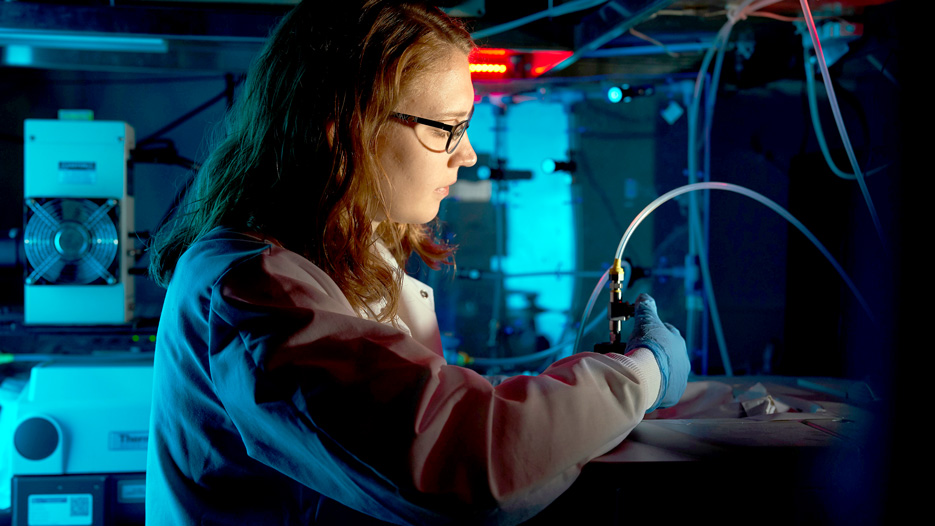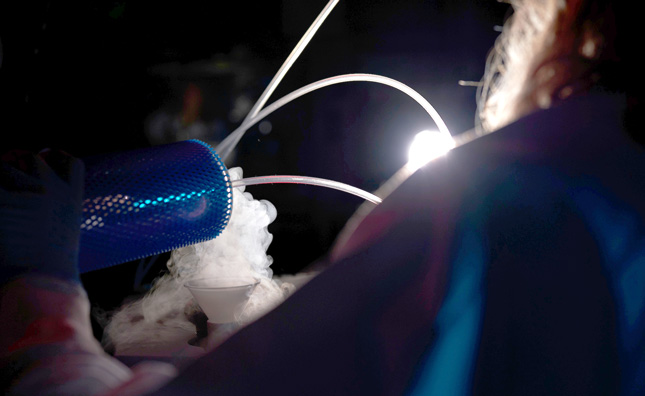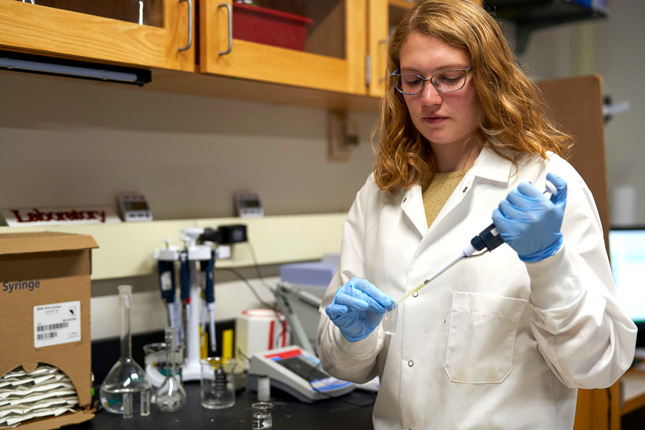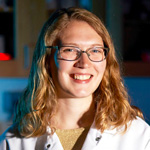The chemistry of my first summer at Skidmore

As I extracted the next sample for my experiment on nitrite photodecomposition, I thought back to where I was just one short year ago — still in high school, unable to imagine where I am today.
To catch you up, here’s the short version of what’s happened over the past 12 months.
I moved to Saratoga Springs from a small town in southern New Hampshire and enrolled at Skidmore, a proud member of the Class of 2022. After just a few days, I was in love. The people were friendly and passionate, the classes were engaging, the campus was beautiful — it seemed too good to be true. (It wasn’t.)
One of those classes, Principles of Chemistry with Professor Juan Navea, was a favorite. And Navea noticed I was good at it, too. After just one semester, he offered me a position in his research lab.

At the time, I was surprised by the opportunity. But I learned the offer was not uncommon — by the second semester of your first year, any student can participate in research.
Faculty Student Research Program
My lab tour was overwhelming. But Navea and his team of about a dozen other students welcomed and supported me. So, I spent the semester learning the ropes and jumping into atmospheric physical chemistry research.
A few months later, Professor Navea offered me another opportunity: stay for the summer and work full time on multiple projects in the lab, including delving further into the one I was already involved with. I was immediately interested.
I spent the summer studying how light decomposes nitrites and how four important atmospheric gases are produced from organic materials in the presence of light.
My days mostly entailed detail-oriented tasks like preparing experiments, adjusting parts of our vacuum system and crunching data. But the results will be part of a growing body of knowledge in the science world about how sunlight and greenhouse gases interact and what those interactions mean for our climate.
For example, nitrous acid, or HONO, is a greenhouse gas that contributes to climate change. When it breaks down, hydroxyl radicals are released. These radicals are one of the key species in photochemical cycles responsible for ozone formation and can lead to "photochemical smog" in polluted regions. They also spark many other atmospheric processes and reactions, so knowing where they come from can tell us a lot about where our climate is heading.
All that to say that as a rising sophomore, I had landed in the middle of an amazing project.

Nitrogen compounds aside, the experience also introduced me to Skidmore’s tight-knit research community. In just a few short months, I’ve grown close to the other students in my lab and gained more confidence in my own abilities.
Just one year into college, I feel comfortable discussing complex academic literature, making hypotheses and carrying out challenging procedures on multiple projects in the lab, both on my own and with other students.
And when I traveled to San Diego to work at the Scripps Oceanographic Institute (another Skidmore opportunity), I didn’t hesitate to participate, as these experiences prepared me to engage at a level far above most undergraduate researchers.
While I certainly had high hopes for my future a year ago, I never dreamed this was all possible. And it’s all thanks to Skidmore’s commitment to faculty-student collaborative research.
Luckily, since photodecomposition may not be for everyone, transformative learning experiences like this span all Skidmore departments.
The Psychology Department uses an eye tracker to study the behavior of online shopping. The Biology Department looks at single-celled plants as an organism to model more complicated life forms. The Management and Business Department recently looked at the evolution of shopping malls in America. And that’s only a fraction of the summer research being done.
So, whether it was destiny, luck or intuition that led me to Skidmore’s Chemistry Department, I am incredibly grateful. And I can’t wait to see what the next year brings.
